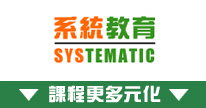課程名稱:CompTIA Server+ 國際認可證書課程
- 簡稱:CompTIA Server+ Training Course |
SK0-005 CompTIA Server+ (18 Hours)
1. Server Hardware
1.1 Server Form Factors
1.2 Cable Management Arms
1.3 Tower
1.4 Blade Technology
1.5 Concepts of Server Components
1.6 Power and Cooling Requirements
2. Installing and Configuring Servers
2.1 Installing and Configuring Server Operating Systems
2.2 Determining the Server Role/Purpose
2.3 Boot Sequence
2.4 Disk Preparation
2.5 RAID Types
2.6 RAID 0 (Striped Disks)
2.7 RAID 1
2.8 RAID 3 or 4 (Striped Disks with Dedicated Parity)
2.9 RAID 5 (Striped Disks with Distributed Parity)
2.10 RAID 6 (Striped Disks with Dual Parity)
2.11 RAID 1+0
2.12 RAID 0+1
2.13 RAID Setup
2.14 Partitioning
2.15 Filesystems
2.16 Swap or Page File
2.17 Local Account Setup
2.18 Connecting to the Network
2.19 Joining a Domain/Directory
2.20 Security Considerations
2.21 Installing Features, Roles, Applications, and Drivers
2.22 Performance baselining
2.23 Server Optimization
2.24 Swap or Pagefile Optimization
2.25 Unattended Installations
2.26 Deploying Images and Cloning
2.27 Scripted Installs
2.28 Server Administration Access and Control Method
2.29 Network-Based Operating System Administration
2.30 Purpose and Operation of Virtualization Components
2.31 Management Interface for Virtual Machines
2.32 Hardware Compatibility List
2.33 BIOS/UEFI Compatibility and Support
2.34 CPU Compatibility Support
2.35 Resource Allocation Between Guest and Host
3. Server Maintenance
3.1 Server Roles and Requirements
3.2 Web Server Role
3.3 Application Server Role
3.4 Directory Services Server Role
3.5 Database Server Role
3.6 File Servers Role
3.7 Print Server Role
3.8 Instant Messaging Server
3.9 Mail Server Role
3.10 Routing and Remote Access Service Server Role
3.11 Dynamic Host Configuration Protocol (DHCP) Server Role
3.12 Domain Name System (DNS) Server Role
3.13 Network Time Protocol (NTP) Server Role
3.14 Server Maintenance Techniques
3.15 Compatibility Lists
3.16 Outages and Service-Level Agreements
3.17 Performance Monitoring
3.18 Processes and Services Monitoring
3.19 Hardware Maintenance
3.20 Replace Failed Components
3.21 Preventive Maintenance
3.22 Proper Shutdown Procedures
3.23 Fault Tolerance and High Availability Techniques
3.24 Load Balancing
3.25 Asset Management and Documentation
3.26 Life-Cycle Management
3.27 Inventory
3.28 Documentation
3.29 Recovery Documentation
3.30 Baseline Documentation
3.31 Change Management Policies
3.32 Service-Level Agreement
3.33 Server Configuration Documentation
3.34 Secure Storage of Sensitive Documentation
4. Server Storage Technologies
4.1 Direct Attached Storage (DAS)
4.2 Network-Attached Storage (NAS)
4.3 Storage Area Networks (SANs)
4.4 Fibre Channel
4.5 HBAs and Fabric Switches
4.6 LUN Masking
4.7 iSCSI
4.8 Fibre Channel over Ethernet (FCoE)
4.9 JBOD
4.10 Tape Drive
4.11 Tape Library
4.12 Optical Drive
4.13 Flash, Compact Flash, and USB Drive
4.14 Installing and Deploying Primary Storage Devices
4.15 Disk Specifications
4.16 Interfaces
4.17 Fibre Channel
5. Capacity and Fault Tolerance Requirements
5.1 Calculating Appropriate Storage Capacity and Planning for Future Growth
5.2 Disk Quotas
5.3 Compression
5.4 Capacity Planning Considerations
5.5 Software vs. Hardware RAID
5.6 Configuration Specifications
5.7 Hot-Swap Support and Consequences
5.8 Hot Spare vs. Cold Spare
5.9 Array Controller
6. Securing the Server
6.1 Physical Security Methods and Concepts
6.2 Single-Factor Authentication (SFA)
6.3 Multi-Factor Authentication (MFA) 176
6.4 Mantrap
6.5 RFID
6.6 ID Card
6.7 Biometric
6.8 Keypad
6.9 Access List
6.10 Security Guard
6.11 Security Camera
6.12 Keys and Locks
6.13 Cabinet
6.14 Rack Mount
6.15 Server Chassis/ Tower Server Locks
6.16 Server Hardening Techniques
6.17 Endpoint Security
6.18 Host-based Intrusion Detection System (HIDS)
6.19 Anti-Malware
6.20 Vulnerability Scanners
6.21 Hardware Hardening
6.22 Disabling Unneeded Hardware and Physical Ports/Devices
6.23 BIOS Password
6.24 Disable Wake on LAN (WoL)
6.25 Chassis Locks and Intrusion Detection
6.26 Environmental Controls techniques
6.27 Uninterrupted Power Supply (UPS)
6.28 Power Distribution Unit (PDU)
6.29 Capacity Planning
6.30 Safety
6.31 ESD Protection Procedures
6.32 Proper Lifting Techniques
6.33 Rack Stability
7. Securing Server Data and Network Access
7.1 Basic Network Security Systems and Protocols
7.2 Firewalls
7.3 Network Access Control
7.4 Router Access Control List (ACL)
7.5 NIDS
7.6 Authentication Protocols
7.7 Public Key Infrastructure (PKI)
7.8 SSL and TLS
7.9 Virtual Private Network (VPN)
7.10 Internet Protocol Security (IPsec)
7.11 Virtual Local Area Networks (VLANs)
7.12 Security Zones - DMZ
7.13 Security Zones - Intranet and Extranet
7.14 Security Zones - Public and Private
7.15 Logical Access Control Methods
7.16 Data Security Methods and Secure Storage Disposal
7.17 Storage Media
7.18 Physical Destruction
8. Disaster Recovery
8.1 Disaster Recovery Principles
8.2 Site Types
8.3 Replication Methods
8.4 Continuity of Operations
8.5 Backup
8.6 Snapshot
8.7 Data Restore vs. Operating System Restore
8.8 Backup Media Types
8.9 Media and Restore Best Practices
8.10 Tape Rotation and Retention
8.11 Media Storage Location
8.12 Security Considerations
8.13 Environmental Considerations
9. Troubleshooting
9.1 Troubleshooting Theory and Methodologies
9.2 Identifying the Problem and Determining the Scope
9.3 Question Users/Stakeholders and Identify Changes to the Server/Environment
9.4 Collect Additional Documentation/Logs
9.5 Replicate the Problem as Appropriate
9.6 Perform Backups Before Making Changes
9.7 Establish a Theory of Probable Cause
9.8 Determine Whether There Is a Common Element of Symptom Causing Multiple Problems
9.9 Test the Theory to Determine Cause
9.10 Once Theory Is Confirmed, Determine Next Steps to Resolve Problem
9.11 If Theory Is Not Confirmed, Establish New Theory or Escalate
9.12 Establish a Plan of Action to Resolve the Problem and Notify Impacted Users
9.13 Implement the Solution or Escalate as Appropriate
9.14 Make One Change at a Time and Test/Confirm the Change Has Resolved the Problem
9.15 Reverse the Change If Appropriate and Implement New Change
9.16 Verify Full System Functionality and If Applicable Implement Preventative Measures
9.17 Performing a Root Cause Analysis
9.18 Document Findings, Actions, and Outcomes Throughout the Process
9.19 Common Hardware-related problems
9.20 Common “Operating System Not Found” problems
9.21 Power Supply Failure
9.22 I/O Failure
9.23 Cooling Failur
9.24 Environmental Issues which affects server normal operation
|

